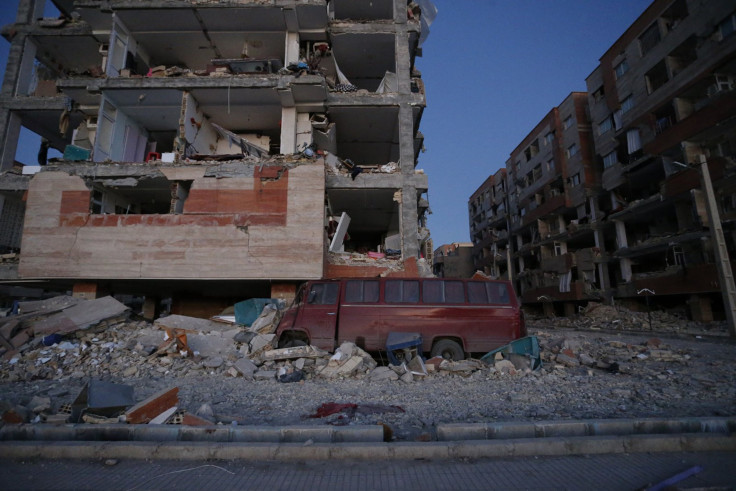Iran 7.3-Magnitude Earthquake Videos, Photos; Iraq, Kurdistan Region Also Hit

A 7.3-magnitude earthquake struck the northern border region between Iran and Iraq, killing at least 145 people and injuring hundreds more.
At least 141 people were killed in Iran, Behnam Saeedi, a spokesman for Iran’s National Disaster Management Organization, said on the state television. More than 850 were injured, he said. The quake was felt as far west as the Mediterranean coast.
Reuters reported the epicenter was in Penjwin in Sulaimaniyah province in the Kurdistan region in Iraq, close to the main border crossing with Iran. One of the hardest hit provinces in Iran was Kermanshah, which announced three days of mourning. More than 97 of the victims were in the town of Sarpol-e Zahab in the province, which is about 15 kilometers from the Iraq border, Reuters said.
At least four people were killed and at least 50 were injured in Sulaymaniyah province and about 150 were injured in the city of Khanaquin in Iraq. In the town of Darbandikhan, 75 kilometers east of the city of Sulaimaniyah, around 30 people were injured. Kurdish Health Minister Rekawt Hama Rasheed told Reuters: "The situation there is very critical."
He added that the main hospital in the district was severely damaged and had no power. The injured were hence taken to Sulaimaniyah for treatment.
The Guardian reported that rescue operations were being held through the night to find people trapped under the rubble of collapsed buildings after the earthquake.
"There are still people under the rubble. We hope the number of dead and injured won’t rise too much, but it will rise," Mojtaba Nikkerdar, the deputy governor of Kermanshah province on the Iraqi border, was quoted as saying on state television.
Thousands of people in both countries ran out onto the streets and parks fearing aftershocks of the quake.
Several pictures and videos that showed buildings collapsing due to the quake and the rubble caused as a result were posted on social media.
A house damaged with the recent #earthquake at #Darbandixan , #Kurdistan #Iraq #Helebce #Erbil #Sulaimanyah pic.twitter.com/PA5ip9iTUh
— Rawand M Azeez (@rawandazeez) November 12, 2017
VIDEO: Powerful earthquake interrupts live TV report in Iraqi Kurdistan; at least 67 dead pic.twitter.com/4urISIEWGJ
— BNO News (@BNONews) November 12, 2017
More
— Diyar Kurda (@diyarkurda) November 12, 2017
Footage shows moments when magnitude 7.2 #earthquake rocked #Kurdistan region of #Iraq, #Sharbazher district in #Sulaymaniyah Governorate pic.twitter.com/91JLSwlzzJ

A footage shows how people rush to the exit doors inside a mall due to the #Earthquake in #Erbil capital city of #Kurdistan. pic.twitter.com/SDg7Yk71ev
— Lawk Ghafuri (@LawkGhafuri) November 13, 2017
"The night has made it difficult for helicopters to fly to the affected areas and some roads are also cut off... we are worried about remote villages," Iranian interior minister Abdolreza Rahmani Fazli said in an interview on state television, reported Reuters.
Majida Ameer, who ran out of her building in the Baghdad’s Salihiya district with her three children said: "I was sitting with my kids having dinner and suddenly the building was just dancing in the air. I thought at first that it was a huge bomb. But then I heard everyone around me screaming: 'Earthquake!'"
People were also advised to stay away from buildings and not to use elevators, in case of aftershocks, by Iraq’s meteorology center.
The electricity was cut off in several cities in the two countries.
The Washington Post cited state media which said Iran’s Supreme Leader Ayatollah Ali Khomeini offered his condolences Monday morning and urged rescuers and all government agencies to do everything in their capacity to help those trapped in the rubble.
© Copyright IBTimes 2025. All rights reserved.





















